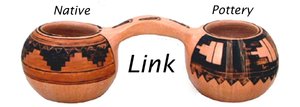
Navajo Pottery
Native American Navajo Samuel Manymules
Samuel, who occasionally refers to himself as “Leumas” Manymules in a reversal of the letters in his first name was born in 1963, of the Bitterwater Clan for the Red House Clan of the Navajo (Dine’) Nation.
Pi78 Navajo Samuel Manymules olla with swirled exterior. 9" x 7"
$900.00
Native American Navajo Samuel Manymules
olla using diagonal swirls to add visual interest to this perfectly proportioned bowl. Manymules pots have become increasingly popular in recent years, contributed to by his recognition as a perennial winner at Santa Fe Indian Market for several years.
Samuel, who occasionally refers to himself as “Leumas” Manymules in a reversal of the letters in his first name was born in 1963, of the Bitterwater Clan for the Red House Clan of the Navajo (Dine’) Nation.
As this pot demonstrates, Samuel has a command of both traditional techniques and contemporary design concepts. This combination of talents has propelled him to the top tier of Navajo potters.
Please Note: For a limited time, our normal fee for packing and shipping this work of pottery art within the 48 mainland United States will be absorbed by Native-PotteryLink, resulting in FREE SHIPPING to any qualifying address. Shipping to other destinations may be arranged by emailing Sanibelart@gmail.com.
In a video at Additional Info, he describes the nature of his "Perfect World" bowl. He also separately describes his approach to potting, in his own words.



